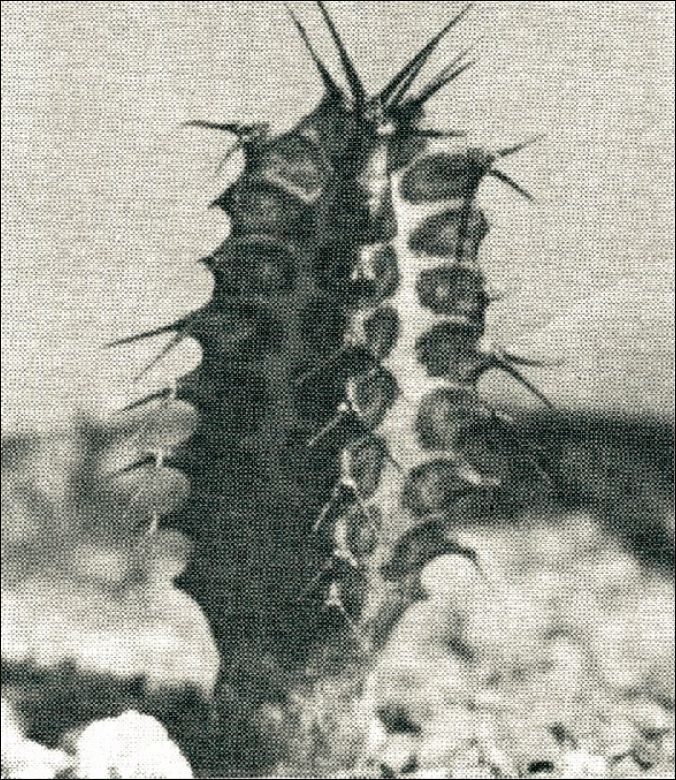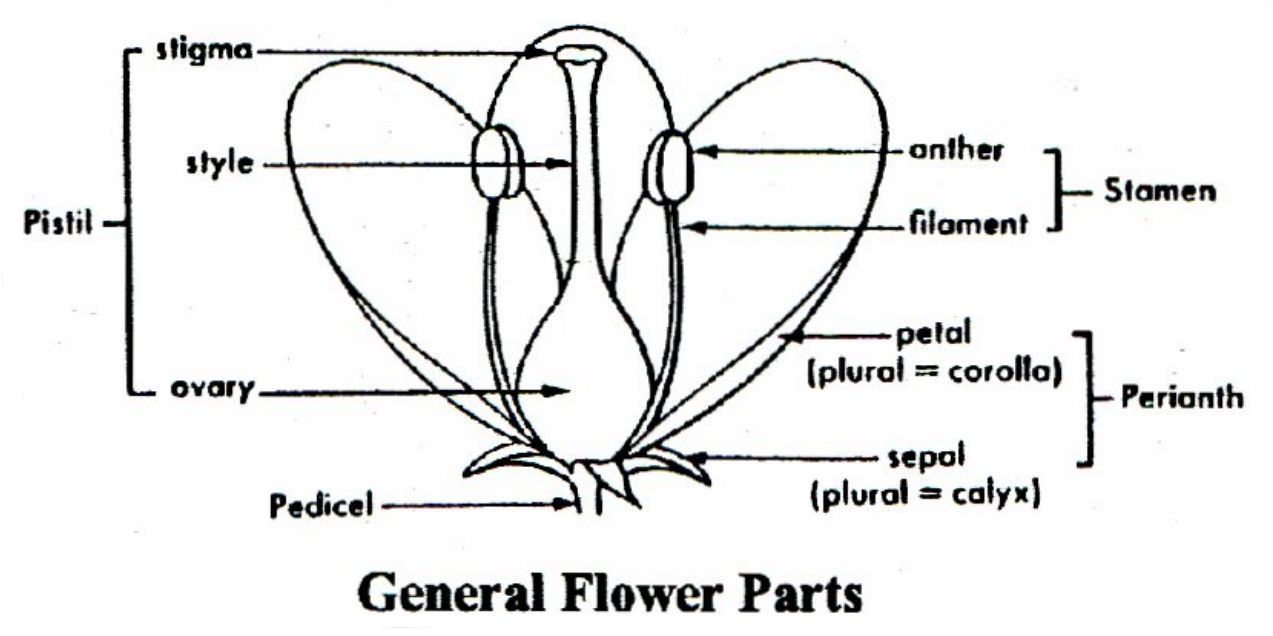By Doug Rowland
![]()
Doug Rowland was co-editor with Marina Welham of the 1994 Special Edition of The Amateurs’ Digest. This article is revived from that 1994 print edition. All print editions were in black and white, including photos and illustrations.
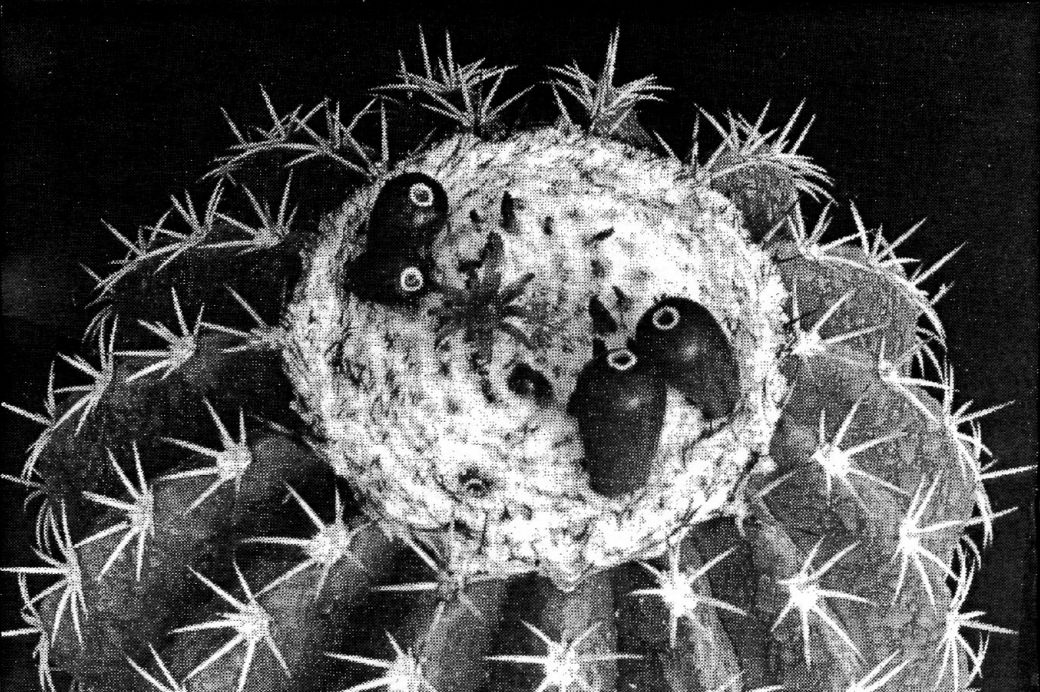
Some cacti form fruit with viable seeds by means of self-pollination. Two of the best examples of plants producing seeds themselves are found in the genera Mammillaria or Rebutia.
Others do not set seed themselves and to fruit successfully must be pollinated. To be successful, you need to have two plants of the same species which will flower at the same time. It is very important to choose the correct time for this procedure. The flowers must be open and releasing pollen. Midday, or in the case of nocturnal flowers, early evening, is an excellent time to arm yourself with a small, soft camel hair brush. Remove a little pollen from the style of one flower and carefully deposit it on the stigma of a flower of another similar plant. The flower will die and a seed berry will begin to grow. In some genera, the seed berry forms inside the plant body, as in Mammillaria, or on the base of the globular stem as in Rebutia.
Because there is a distinct lack of pollinating agents in a greenhouse, it is necessary for you to do the hand work of pollinating with a soft brush.
Allow the seed berries to fully ripen, then they begin to shrivel and dehisce. Carefully collect the dry seeds as in Rebutia, Turbinicarpus, Strombocactus and Echinocereus. Place in a dry, clean paper packet and store in a cool place until the following spring.
If you leave Rebutia berries on the plant, eventually they will dry out, releasing the seeds which will fall into the pot and germinate around the mother plant.
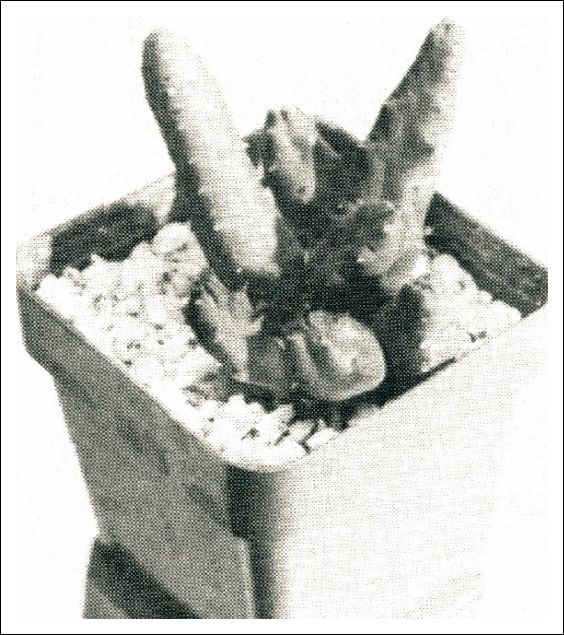
Euphorbia capsules present special problems because when ripe they explode and eject seed in all directions, often germinating new plants in the pots of other plants in your collection. Euphorbia obesa, for example, has exploding tripartite, dry capsules.
Secure white paper caps temporarily to the plants and seeds, when ejected, will be prevented from travelling away.
In Euphorbia, many species produce wholly male or wholly female plants. In these cases, you will need a plant of each to successfully produce seeds.
In Euphorbia obesa, the pollen takes easily and two crops of seeds can be obtained in one season. In E. obesa there is no sure way of sexing a plant until it is in flower. Some flowers remain closed for the length of their life, such as my Poellnitzia rubiflora (classied as Haworthia).
Some of the Asclepiads are difficult to pollinate, but occasionally blowflies can and will do the job for you. Large, brown, evil smelling Stapelia flowers blooming in a greenhouse or conservatory in summer will soon attract a host of house flies and blue flies which often lay their eggs near the center of the flower area. Sometimes, the eggs will hatch and come to nothing, but often the important work of pollination has been done.
Green-pointed seed horns, reminiscent of another genus, Pachypodium, will soon appear and grow on. Eventually, the skins will dry and dehisce, revealing hosts of seeds fixed to woolly ‘parachutes’. You will now have to collect these quickly or the seeds will become windborne and lost. Take the seeds indoors to a calm and clean area and detach the parachutes from the seeds. The parachutes are thrown out, of course, and the seeds packed into a clean paper envelope or stamp packet and stored in a cool, dry place until sowings begin early the next year. You will read in many books that Asclepiad seeds have a very short viability. Do not believe it. If stored properly, they will last for quite some time and then they will shrivel and dry up and be of no further use. Plump, good quality seeds should germinate quickly, sometimes in two days from sowing. Water well at the time of sowing with a fungal mix.
Wet berries of the Cactaceae need a different treatment. When ripe, remove them carefully, slit edgeways with a sharp knife, scrape the seeds and pulp into a little clean water and stir briskly to get the juice to dissolve into the water. Strain through a coffee filter paper and allow to dry. Carefully remove from the filter paper, place in a clean paper packet and store in a cool place until the following spring. We have to produce Lophophora williamsii seeds this way because they are not available in quantity commercially. Each berry produces very few seeds, so in order to obtain a thousand seeds, it is a long and painstaking job.
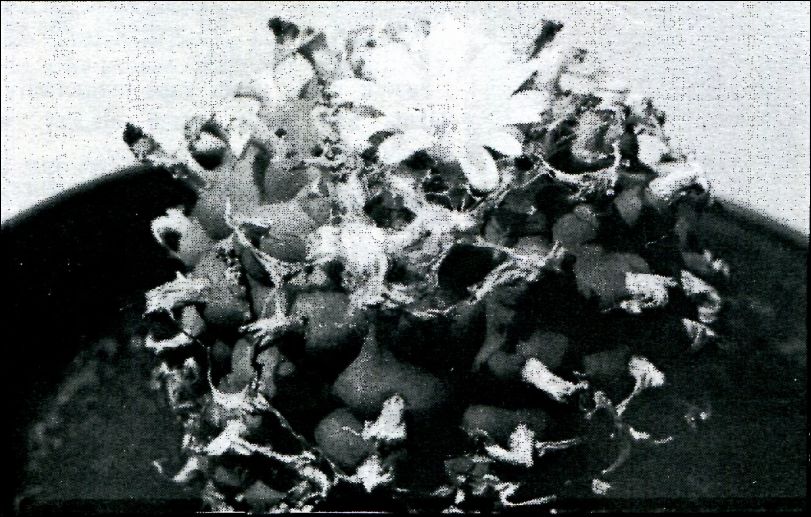
Mesembryanthemaceae are interestingly quite different. Their seeds are eventually produced in dry capsules with ingeniously designed lids which open when a spot of rain falls on them. You can crush and crumble the seeds out, but in doing so you may crush the seeds themselves and the debris can cause fungal growths to form when the seeds are sown.
To cleanly and correctly remove seeds from these capsules, you will need a cup or small carton of clean water and a pointed stick made from a 3mm hardwood dowel.
Place the capsules upside down in the water and after a few minutes they will open. Hold the base with one hand between the finger and thumb and, dunking, carefully root out the seeds from each partition with the pointed stick.
We have, on occasion, found 3,000 seeds in a single Dinteranthus capsule.
In Lithops, both seeds and capsules vary in size and, on average, a capsule will contain about 300 seeds, although some will produce considerably more, some much less. Allow to dry out and packet as before.
Occasionally, capsules of Lithops or Dinteranthus are available from African nurseries.
Germination of seeds of Mesembryanthemaceae, including Lithops, can take four days to about one year. They will germinate at temperatures from 50°F and up when day length and temperature are suitable for that particular species. In the main, they are easy to germinate in greenhouse conditions. The seeds are comapratively small and will often come up in successive ‘waves’ after periods of time when light, day length and all other conditions are suitable. Give seedlings plenty of light and do not cover after germination. Winter and short-day growers are best sown in autumn, the rest in spring. A 40°F minimum temperature in winter with plenty of light is very congenial to adult plants. These are excellent plants for beginners to try. A hundred seeds sown in a 2-1/2″ pot will give pleasing results and encouragement for you to try something a little more difficult and challenging. Do not discard pots of ungerminated seeds. Dry them off and try again next growing season.
Tips and Tidbits
If a green algae begins to appear on the soil surface amongst your seedlings, sprinkle a small spoonful of bird grit on the soil (available at pet shops). This excludes light and resolves the problem of algae. Succulent seeds with hard coats may have to be chipped or led to induce the seed to take in water, which they must do to germinate. Adansonia and Bombax fall into this group. High-altititude and cold-climate cactus seeds will often germinate better if subjected to not less than one month of articial wintering in a domestic refrigerator. Then attempt to germinate in the normal way. Tephrocacms will be in this category along with Eriosyce and some Echinomastus.
Many succulent plant collectors also grow Carnivorous Plants. To raise these from seeds fill a pot to within half an inch of the top with a mix of white sand and peat moss in equal parts. Stand permanently in half an inch of rainwater. Sow seeds on the surface and allow up to two years to germinate.
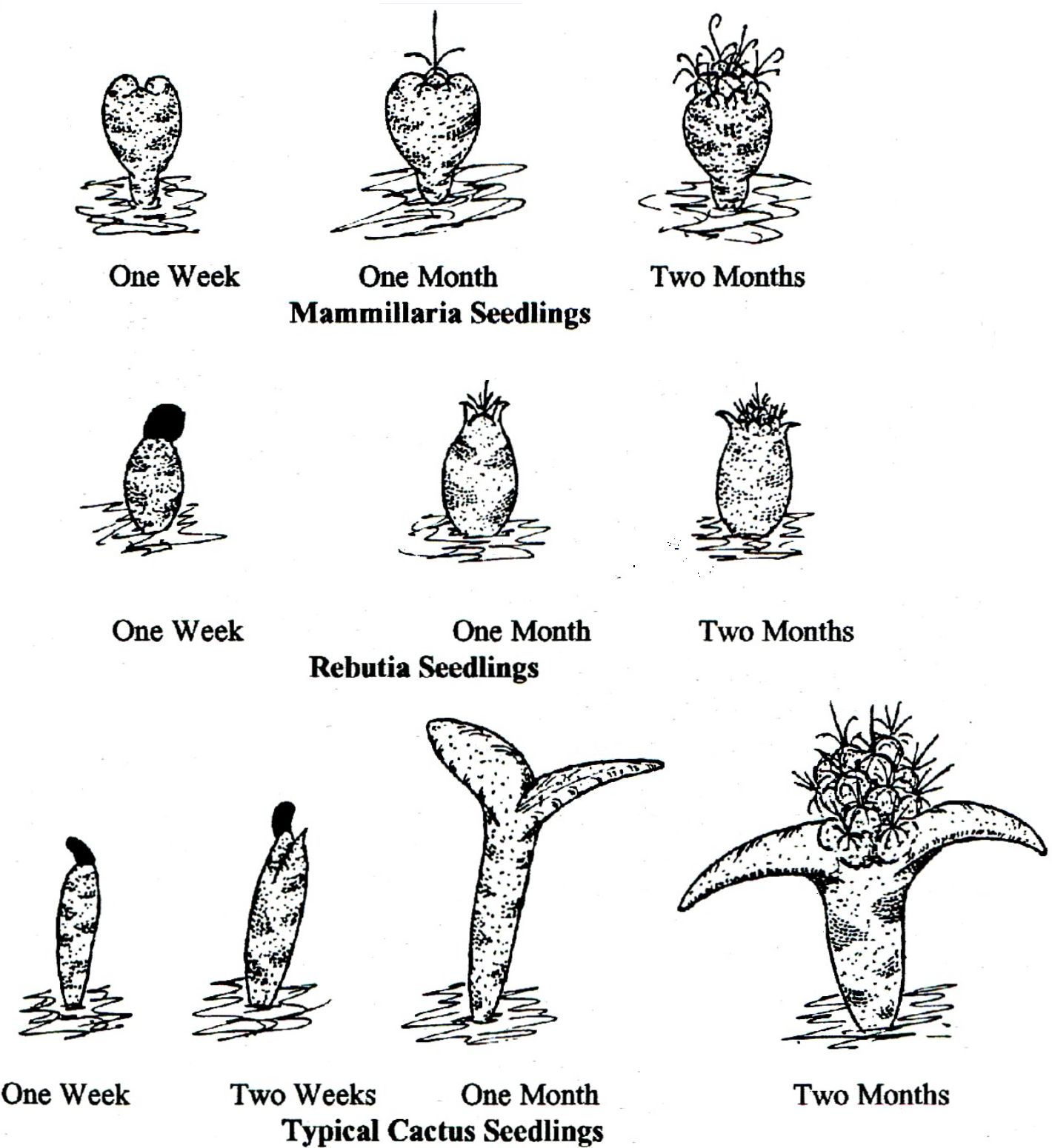
![]()


